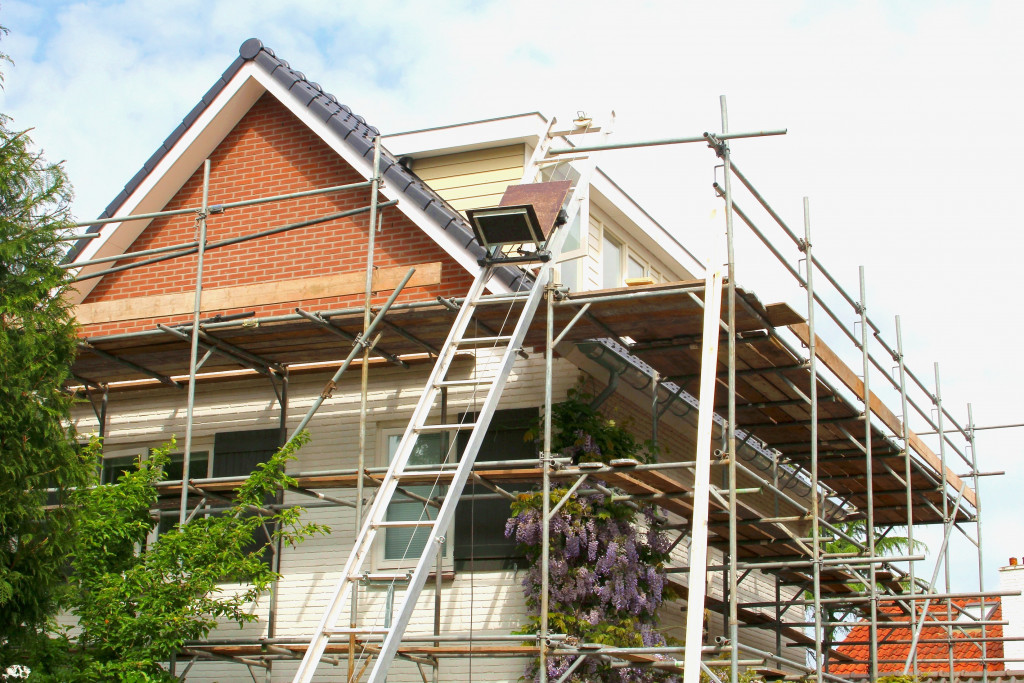The façade is oftentimes overlooked and taken for granted. The origins of the façade or the front of your home come from the earliest records of human history. The origin of architecture came from the Greek and Roman cultures. They expressed the front of their governmental buildings, and some residential ones, with columns that have stood through natural disasters. Columns were symbols of authority and power in the Greco-Roman cultures and ages. It is through the construction of these amazing foundations that they expressed how important the building was.
Façades were not lost in time after the Greco-Roman era. In the transition to the Holy Roman Empire and the Medieval ages, elegant façades fronted most religious buildings — the center of society in these times. People look toward spiritual guidance in a time when science and education weren’t the focus of community building. Wars and repeated pillaging were the main themes of this time.
The hard front of integral structures of governance and residence served to defend themselves from potential invaders. While medieval architecture was heavily painted for design, it mainly served as defense and food storage. The façades were short, practical, and mostly defensive. Castles had no use for huge gardens. Walls were common in towns and communities.
The façade ultimately transformed into what we know right now. Around the age of the renaissance, mansions and castles of royalty accommodated lavish gardens. While gardens weren’t new inventions, gardens merely for show and not for agriculture were unheard of. In a display of wealth, gardens were used only for show and are generally impractical to maintain. Only emperors of old used to have lavish gardens inside their residences. Now, the façade is used to decorate the fronts of houses and rich mansions.
Why The Façades Matters
The façade’s purpose has changed through the years, but its importance cannot be understated. It is still purposeful now because the façade is the introductory area of your house to possible guests. While it is also a display of wealth mostly, it displays how you want your visitors to perceive you. The façade is indicative of how much you value the people going in your home.
The façade is also the main identifier and defines the overall look of your own home. Some houses even value a large façade over the size of their own home. A large display of land screams a higher value of the real estate — as it opens up the possibility of constructing whatever you want on the space.
Zero Planning
The most common challenge with a frontage is that people don’t know what to do with it. Most first-time real estate owners don’t know what to do with a façade when presented with one. Some hire an exterior landscaper like All Exteriors to do hardscaping or landscaping of their frontage. Some hire construction managers to make the most out of it. No matter what it is, having a decisive mind about the frontage is significant. Not only will it be the way first thing people see before entering your home, but it also provides your guests a preview of what to expect from its owners.

Identical Designs
Most frontages are required to have at least an identical design to your neighborhood’s frontages. Façades, on some nitpicky homeowner’s associations, are absolutely required to at least be in theme, if not uniform with the neighborhood’s design. As a result, most of the designs in a neighborhood become too identical or similar to the others. Some are even forced to design it the way they don’t want to.
Also, because the knowledge regarding the design of façades is confined to specialists and professionals, the designs of façades have been restricted and unimaginative. Some have recycled design ideas that are already applied to multiple homes.
Use of Space
Not all homes have the luxury of a façade. A façade is a superfluity if you think about it. Maximizing the space that the frontage takes up is the wisest thing you can do. The usage of space will save you quite a bit of time and money when it comes to maintenance. For example, while a garden may be satisfying to install in the frontage, you also have to think about the costs and effort you need to keep it.
In Nevada, keeping a green lawn is a luxury, as water is considered an expensive utility. You need to spend a lot of money to keep a garden green and lush. You also have to trim it every once in a while to keep it nice to look at. Rethinking what kind of activity you want to do with your façade is only wise and practical in this era where excesses of life are frowned upon.


